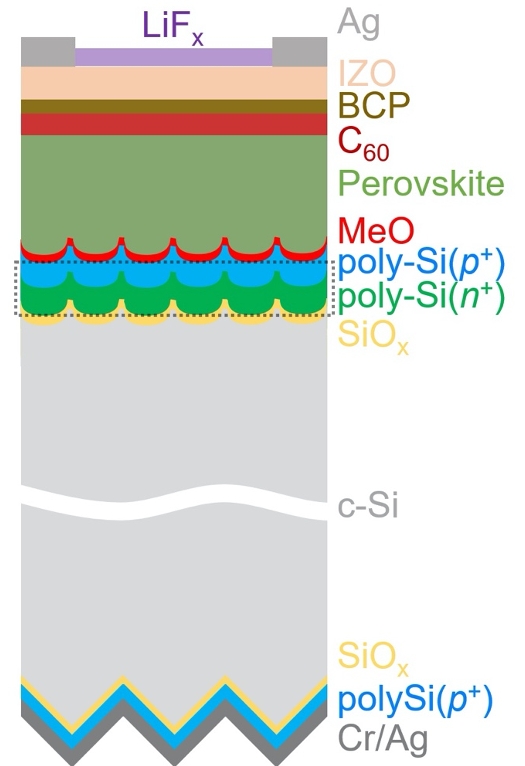The team of researchers jointly developed a polycrystalline silicon tunnel composite layer for perovskite-crystalline silicon (TOPCon) tandem solar cells (TSCs), achieving excellent efficiency and high stability.
Due to their theoretical ultra-high efficiency and cost advantages, perovskite/crystalline silicon tandem solar cells have broad development prospects in the photovoltaic industry and have attracted widespread attention. Previous efforts to improve device efficiency have focused on improving the top cell, but there is a lot of room for improvement beyond the top cell.
The composite layer is the electrical contact layer between the top and bottom cells and plays a crucial role in further improving efficiency.
In this study, the researchers developed a polycrystalline silicon (poly-Si) tunneling composite layer and used it in perovskite/TOPCon crystalline silicon tandem cells.
Through the two-step annealing method, the diffusion of boron and phosphorus dopants is effectively suppressed, resulting in excellent passivation and contact properties of the cell.
Compared with the traditional transparent conductive oxide layer, this new tunneling composite layer has stronger adsorption on polysilicon (P+) substrates and can provide more efficient charge carrier transport and extraction for top-layer perovskite daughter cells.
This newly developed tandem cell achieves a remarkable photoelectric conversion efficiency of 29.2%, one of the highest values reported to date for perovskite/TOPCon tandem cells.
In addition, the solar cell shows high stability by maintaining an initial efficiency of 85% after 500 hours of continuous tracking of the maximum power point.
According to the researchers, finite element simulations further shed light on carrier transport and tunneling mechanisms. In addition, correlation analysis shows that the doping concentration of polysilicon can affect the performance of perovskite/crystalline silicon tandem cells.
 Figure 1 Perovskite/TOPCon TSC with polysilicon tunneling composite layer
Figure 1 Perovskite/TOPCon TSC with polysilicon tunneling composite layer
